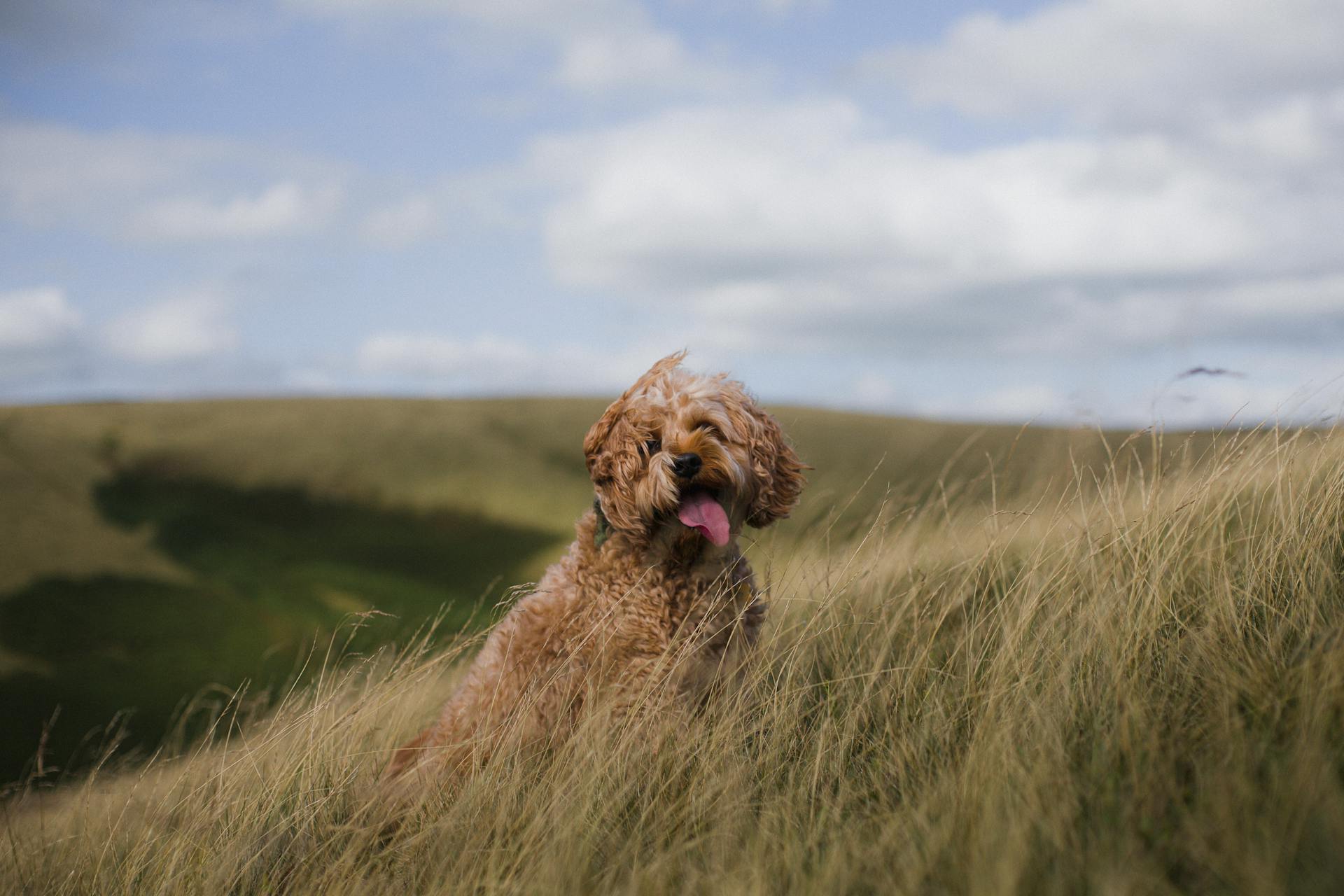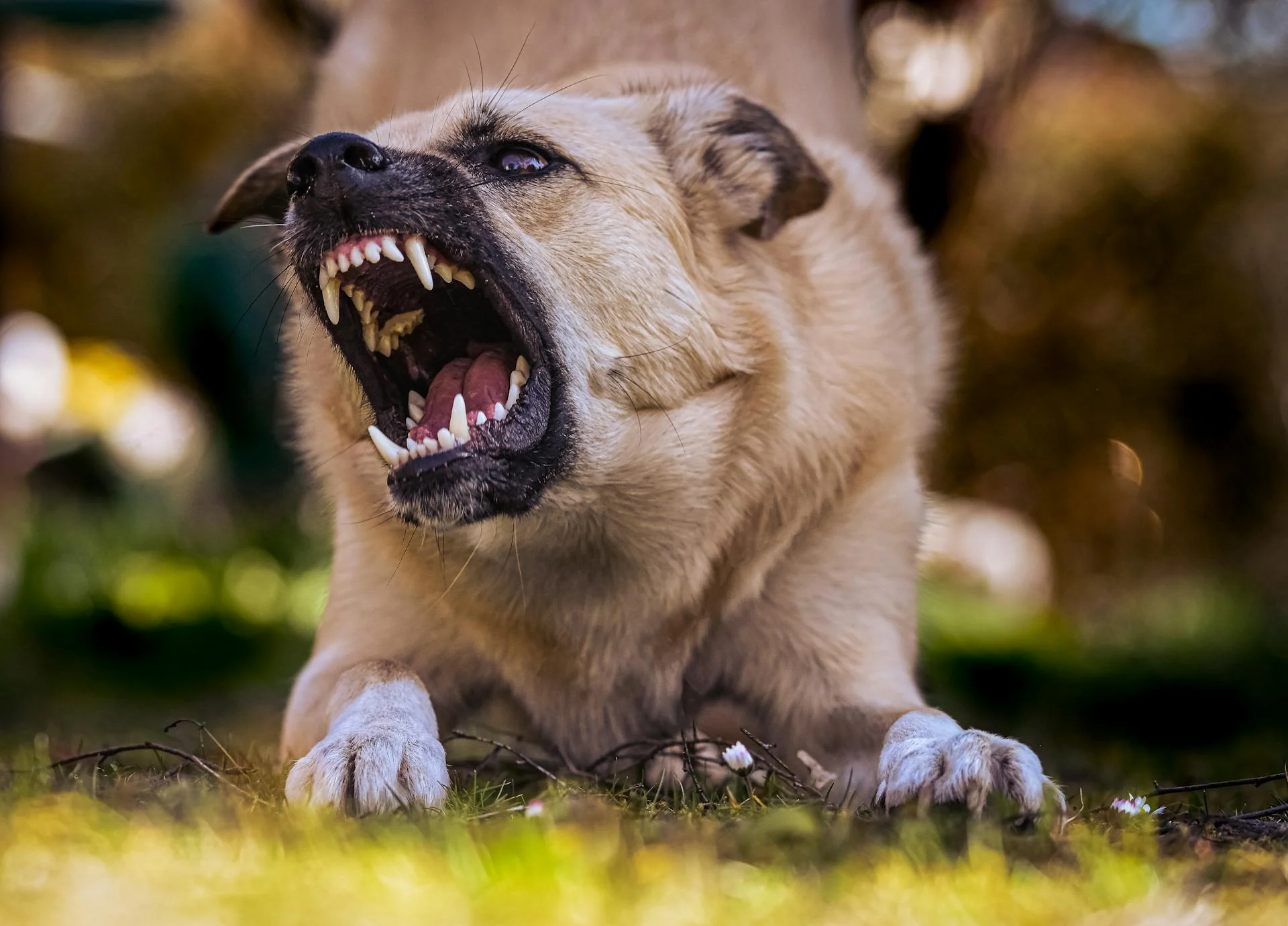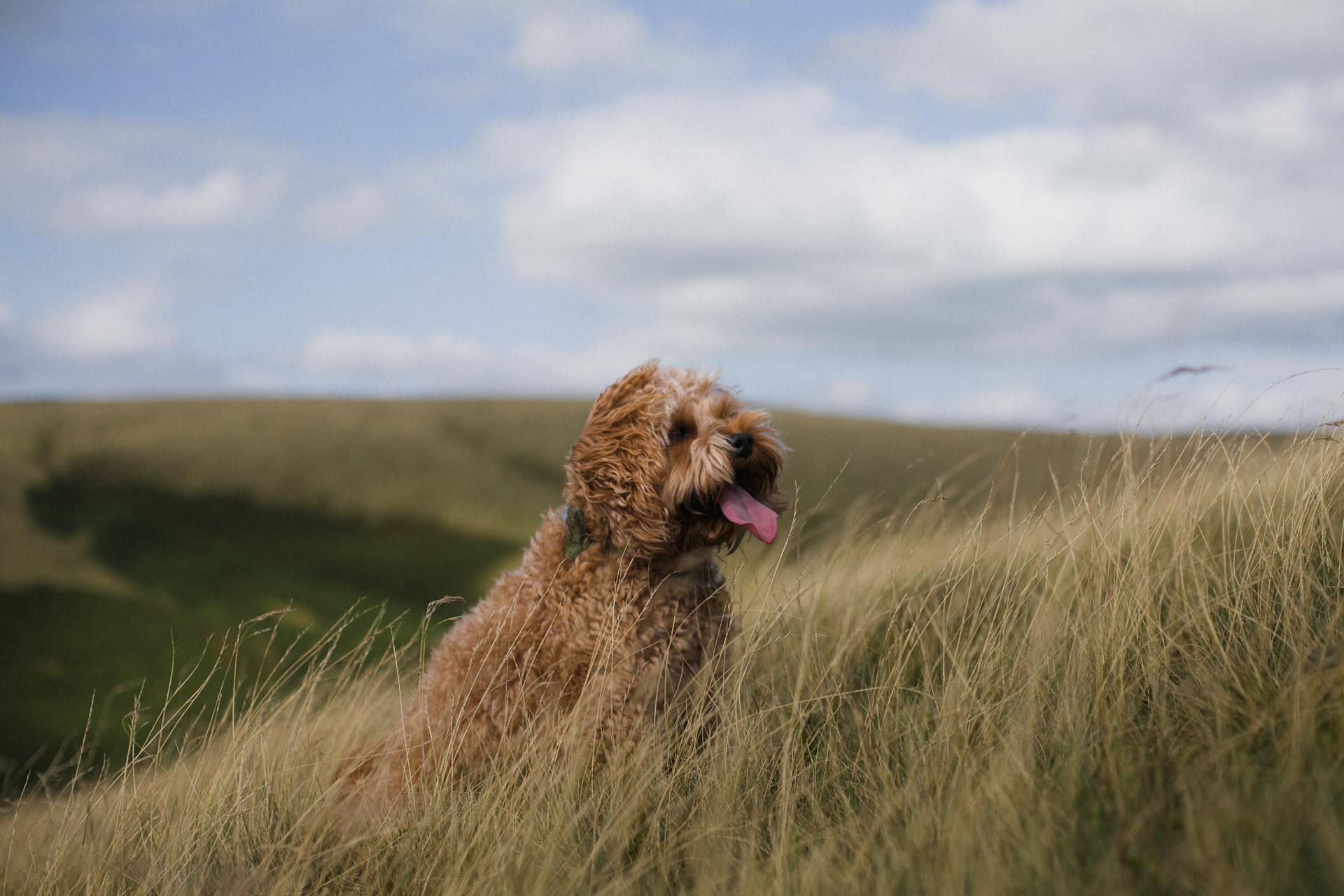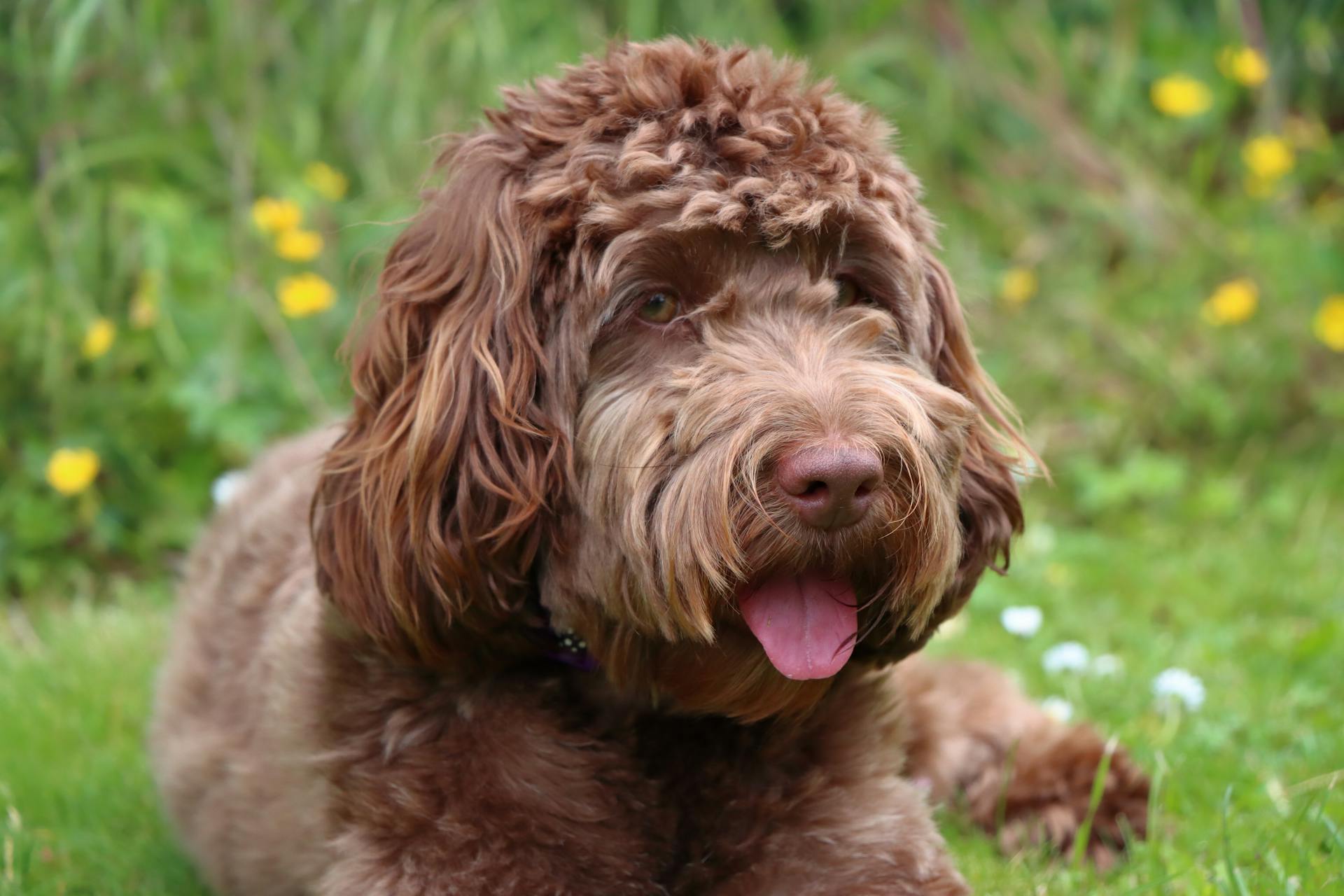
Cockapoo Rage Syndrome can be a terrifying experience for both owners and their beloved pets. It's characterized by sudden, intense outbursts of aggression, often triggered by specific stimuli or situations.
These episodes can last anywhere from a few seconds to several minutes, leaving owners feeling helpless and worried about their pet's well-being. In some cases, the aggression can be so severe that it poses a risk to both people and animals.
Understanding the underlying causes of Cockapoo Rage Syndrome is crucial to managing the condition effectively. Research suggests that genetics, environment, and socialization play a significant role in triggering these episodes.
By identifying and addressing these factors, owners can create a safer and more stable environment for their pets, reducing the frequency and intensity of these outbursts.
Check this out: What Breeds of Dogs Have Rage Syndrome
Understanding Aggression
Aggression in dogs is often a sign of discomfort or fear. A dog may stiffen its body, show teeth, or pin its ears back when it feels threatened or scared.
The canine aggression scale can be a helpful tool for understanding this behavior. At the lower end of the scale are subtle tension indicators like lip-licking, stress-yawning, body rigidity, and avoiding eye contact.
Aggression can escalate quickly, leading to growling, barking, snarling, snapping, or lunging in an attempt to defend itself. This is often the result of a dog's stress or fear in response to a particular stimulus or environment.
Some common signs of aggressive behavior include stiffening of the body, low growling, showing teeth, ears pinned back, tail tucked under, yelps or barks, and lunging.
Here are some common signs of aggression in dogs:
- Stiffening of the body
- Low growling
- Showing teeth
- Ears pinned back
- Tail tucked under
- Yelps or barks
- Lunging
It's essential to recognize that aggression is a behavioral issue, not a matter of obedience. Aggression management requires desensitization to the trigger, which involves positive reinforcement for calm behavior in the presence of the fear-inducing aggression trigger.
Consider reading: Cockapoo Aggression
Recognizing Aggressive Behavior
Cockapoos can exhibit aggressive behavior due to stress or fear, often triggered by a particular stimulus or environment.
Stiffening of the body is a common sign of aggression in cockapoos, as well as low growling, showing teeth, and ears pinned back.
A cockapoo's tail can also give away its emotions, with a tucked-under tail often indicating fear.
You may also notice a cockapoo's hair standing up on its hindquarters when it's preparing to bite.
Other subtle indicators of tension include lip-licking and stress-yawning.
As a dog's stress levels increase, it may exhibit more obvious signs of aggression, such as growling, barking, snarling, snapping, or lunging.
Here are some common signs of aggression in cockapoos:
- Stiffening of the body
- Low growling
- Showing teeth
- Ears pinned back
- Tail tucked under
- Yelps or barks
- Lunging
- Hair standing up on hindquarters
Managing Aggression
Aggression in Cockapoos is a common issue that can be managed with the right approach. It's essential to understand that aggression is a behavioral issue, not a matter of obedience. There are three stages to help manage your Cockapoo's aggressive behavior: Alter your dog's experience of the trigger, Help by changing your dog's reaction to the trigger, and Medications can help relieve your dog's stress and fear.
If this caught your attention, see: Black Dog Syndrome
Aggression can be triggered by various things, such as unfamiliar locations, other animals, clumsy children, crying babies, or receiving too much attention. Resource guarding is another type of aggression, where your Cockapoo feels more territorial around food or your home.
Desensitization is a key method in managing aggression. This involves gradually exposing your Cockapoo to the triggers of its aggressive behavior in a controlled and safe manner. By doing so, your dog can learn to remain composed in these situations with time and patience.
Counter-conditioning is another effective technique. Create a positive association with the triggers of aggression by providing rewards or praise when your dog encounters these triggers without reacting aggressively. This can be done by giving your Cockapoo tempting food, such as a tasty piece of cooked liver, when they confront the trigger without showing any signs of aggression.
It's also crucial to work with a professional dog trainer or behaviorist to develop a tailored behavior modification plan for your Cockapoo. This may involve specific exercises and techniques to address its aggressive tendencies.
Here are some key steps to help manage aggression in your Cockapoo:
- Gradually expose your Cockapoo to the triggers of its aggressive behavior
- Create a positive association with the triggers of aggression
- Work with a professional dog trainer or behaviorist to develop a tailored behavior modification plan
By following these steps and understanding the underlying causes of aggression, you can provide the necessary care and support for your Cockapoo, leading to a safer and happier environment for both your dog and you.
Preventing Aggression
Cockapoos can become aggressive due to feeling threatened or scared, so it's essential to identify common triggers such as unfamiliar locations or other animals.
Resource guarding is another type of aggression, where your Cockapoo feels territorial and protects its space, possessions, and food.
Understanding your dog's attachment to specific items, like toys or blankets, can help you recognize signs of resource guarding.
Cockapoos can also become aggressive while playing due to not understanding limits, so it's crucial to set boundaries and teach them what's acceptable.
Some common signs of aggression in Cockapoos include stiffening of the body, low growling, showing teeth, ears pinned back, tail tucked under, yelps or barks, and lunging.
Watch for these signs and take action before the situation escalates.
To prevent aggression, focus on positive reinforcement for good behavior, such as giving treats or special foods when your dog confronts a trigger without reacting.
Gradually expose your dog to the trigger, and reward calm behavior.
Related reading: Cockapoo Behaviour Problems

Training is also essential to help your dog understand and obey you, so consider enrolling in obedience courses or training at home.
Here are some common triggers for aggression in Cockapoos:
By being aware of these triggers and taking steps to prevent aggression, you can help your Cockapoo feel more confident and calm in various situations.
Addressing Aggression
Aggression in Cockapoos can stem from various triggers, including fear, territorialism, and resource guarding. Understanding these triggers is crucial in developing a plan to address the behavior.
A common indicator of aggression is when your Cockapoo feels threatened or scared, often due to unfamiliar locations, other animals, or excessive attention. Resource guarding is another type of aggression, where your Cockapoo feels territorial about food, toys, or your home.
To address aggression, it's essential to identify the underlying cause and work on changing your dog's reaction. Positive reinforcement is a vital tool in this process, where you reward your dog with treats or special foods when they remain calm in the presence of the trigger.
Discover more: When Do Cockapoo Puppies Stop Growing
Training is also an essential tool in helping your dog understand and obey you. Enrolling your Cockapoo in obedience courses can strengthen your bond and ensure they follow your training. You can also train your dog at home, using commands and exercises to help them cease aggressive behavior.
If your Cockapoo's aggression is persistent or severe, it's best to seek professional help from a certified dog trainer or behaviorist. They can assess the underlying causes of the aggression and develop a tailored behavior modification plan.
In managing aggression, there are three stages to consider: altering your dog's experience of the trigger, helping them change their reaction to the trigger, and using medications to relieve stress and fear. Desensitization to the trigger is a key method in this process, where you reward your dog with positive reinforcement for calm behavior in the presence of the trigger.
Here are some steps to help manage your Cockapoo's aggressive behavior:
- Alter your dog's experience of the trigger.
- Help by changing your dog's reaction to the trigger.
- Medications can help relieve your dog's stress and fear.
By understanding the triggers of aggression and working on changing your dog's reaction, you can help manage and address their behavior.
What Is Rage Syndrome?
Rage syndrome is a complex and serious condition that causes dogs to become aggressive without any apparent trigger. It can be challenging to diagnose and treat effectively.
Dogs with rage syndrome have episodes of extreme aggression that occur seemingly out of the blue and without provocation, yet they otherwise appear friendly and happy. Teller points out that there can be genetic and neurological factors involved in the exact cause of rage syndrome.
One clear sign of rage syndrome is that there is no identifiable trigger leading up to the attack. Additional signs include confusion or seeming dazedness during or immediately after an episode, glazed eyes, dramatic escalation of aggression without any warning, and unpredictability of episodes.
Rage syndrome requires vigilance from owners, who should remain aware of varying signs of the disorder. By understanding the signs and symptoms of rage syndrome, owners can take proactive steps to address the condition and provide a safer environment for both their dog and others.
Readers also liked: Rage Syndrome in Dogs
Sources
- https://dogsbestlife.com/dog-training/aggressive-behavior-cockapoo-breeds/
- https://phys.org/news/2024-04-dog-aggressive-vet-rage-syndrome.html
- https://www.cockapoohq.com/how-to-stop-an-aggressive-cockapoo/
- https://cockapoo.me/cockapoo-training/
- https://www.b2bcaninebehaviourist.co.uk/dog-breeds/cockapoo-behaviour
Featured Images: pexels.com

